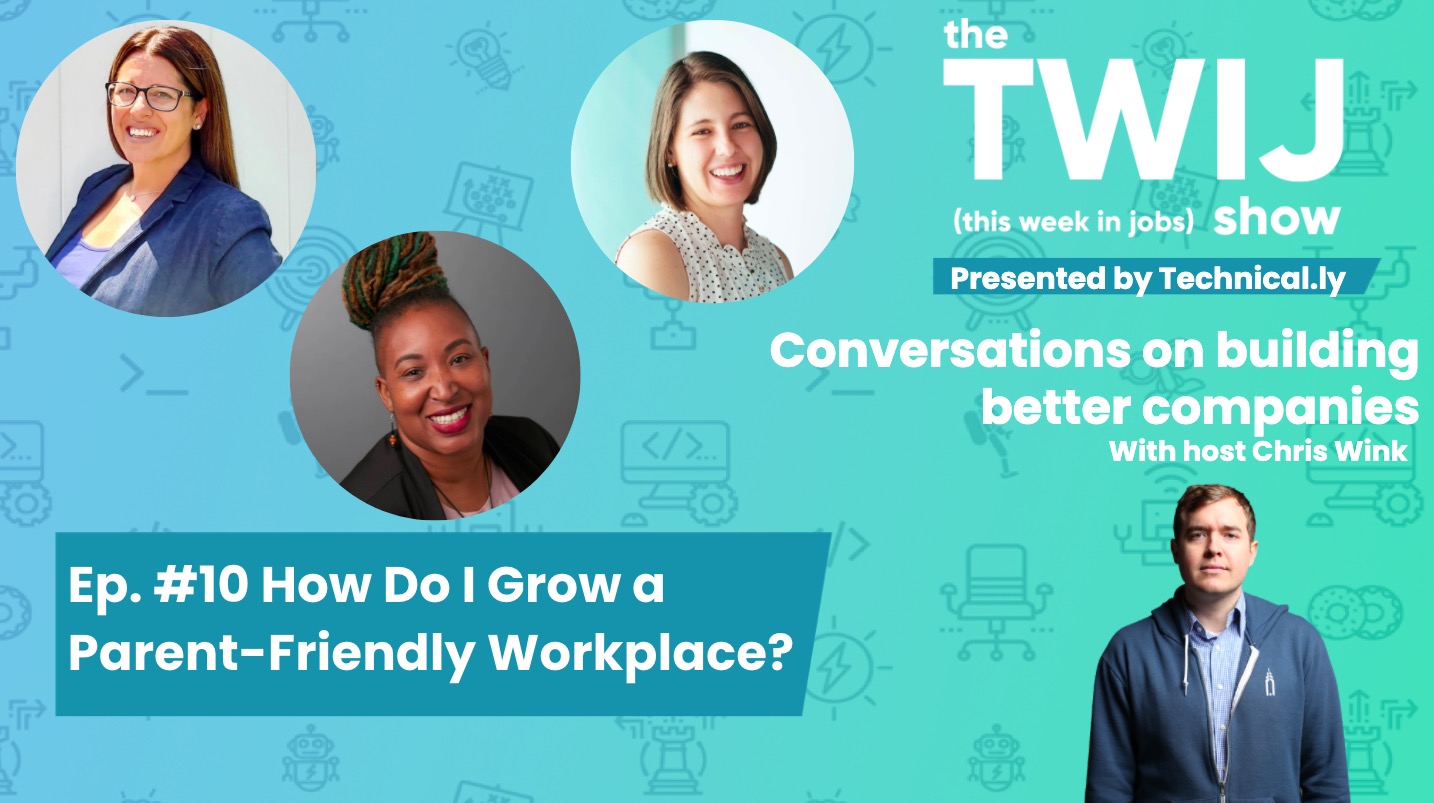Parents are a major part of the workforce.
Four-fifths of parents are working — marking very little change since 1989, according to the Pew Research Center. Growing a workplace welcoming to them, then, is a talent strategy.
But it hasn’t always been approached like that.
“I’ve watched the workplace over time become more friendly to dogs than it is for children,” said Shelly Bell, the founder of Black Girl Ventures. Her kids are 21, 17 and 5, so she’s tracked trends herself over the last couple decades. “It’s because of this patriarchal society.”
Men make up the overwhelming number of company executives. Parenting has been treated as the mother’s work first, so “parenting issues” have often been code language for “women’s issues.” The result has been lagging company policies to support working parents — making American policies some of the worst among rich countries for working moms.
Like, indeed, dog policies, with a lack of government intervention, the private sector has taken a lead in developing workplaces that are accommodating to parents. The pandemic has upended childcare and brought us into our coworker’s homes like never before.
For the latest episode of The TWIJ Show, Technical.ly’s weekly interview series on building better companies, we took on the longstanding priority: How do I grow a parent-friendly workplace?
As a new father myself, I turned to three other working parents, all of whom have kids of different ages and who happen to be experts on company policy and culture. Along with Bell, I was joined by Juliana Pignotti, a senior recruiter at 41-person cloud management firm cloudtamer, and Melissa Richardson, talent manager for Deacom, the 160-person ERP software firm.
Children should be both seen and heard.
It starts at the top. If company leaders want their workplaces to be friendly to families, they should normalize the behavior. Talk openly and show how families are incorporated. Consider a #family Slack channel, and don’t shy away when your toddler walks across your Zoom meeting.
Name and engage teammates on building a schedule that works for them.
For example, you might consider setting office hours. Whether these hours are when everyone on a team should aim to be available for meetings, or in the inverse, whether these times are when a parent knows they’re handling parental duties, the point is that being upfront and navigating parental responsibilities are a major help.
Asynchronous work doesn’t mean working 24/7.
Working until midnight is bad. Working at midnight isn’t necessarily bad.
Ask a parent who finds it easier to pick his kid up at school at 3 p.m. and handle email in the late evening, and you might find this kind of flexibility is a perk, not a strain.
The same can be true for any high-performer, but it’s certainly true for parents. We are at our best at different times, and we have plenty to balance.
It’s crucial to clarify the difference between what is working too much to be healthy and what is working flexible hours. This also will likely be different for employees of different ages, experiences and skill levels. A junior teammate or someone still developing their time management skills may need more oversight. But having children has a way of forcing time management on a person.
It’s understandable for employers to expect some routine time available for cross-team communication and meetings. Work with your parent-employees to develop a schedule that works.
Build a parental leave policy that fits today.
There are preferences that different organizations can handle differently — whether natural birth or adoption are handled differently, if short-term disability is used, and the like.
But there are many best practices that are developing.
For one, both partners in raising a child should take extended leave. Splitting evenly early child support combats over-reliance on, for example, a mother over father in a heterosexual relationship.
For another, early bonding time is crucial when parents are adopting a child. Even scant federal law (which is not required for companies with fewer than 50 employees) recognizes adoption as part of required parental leave.
Last year, Congress passed a bill that gave all federal workers 12 weeks of parental leave, often considered a gold standard of American offerings. (Yes, yes, other countries have more still, but stay with me.)
That length of time can be intimidating for smaller organizations, so there are other options to advance a policy.
At cloudtamer, says Pignotti, the company offers 40 days (320 hours, or eight weeks) of paid parental leave to employees for the birth or adoption of a child — in addition to seven company holidays and a rich personal leave offering of 24 to 30 days of vacation based on length of service and eight days of sick leave annually.
We at Technical.ly recently revised our offering to eight weeks of parental leave, in addition to flexible scheduling and personal time off of 15 to 25 days, depending on length of service. We also offer 10 company holidays, in addition to our closing the office in December, which coincides with school calendars.
Find an example of a parental leave policy from SHRM here.
Consider how your office supports parents.
Offices have long overlooked the needs of new mothers. Just how welcoming might it be if a parent brought in a child because of an unexpected scheduling snafu? Are children welcome at work functions? These send subtle signals to working parents.
Deacom’s headquarters has an on-site wellness room which includes a private space for nursing mothers. The company also has a foundation which supports the organizations that our employees are most passionate about by providing monetary donations and promoting volunteerism. Many “employees have gotten involved with these organizations due to circumstances affecting their children and loved ones and we want to support them,” said Richardson.
Include other options of flexibility.
Turns out parenting doesn’t stop after an employee returns from parental leave. It’s a lifetime job, with around two couple decades of pretty intensive support. (Or, you know, even longer.)
From your parental leave and well beyond, build in mechanisms to temporarily transfer to part-time and take periods of sabbatical (paid, or unpaid). The pandemic has brought to mind federally required offerings of extended leave to care for sick loved ones.
Pignotti notes this is important to her working at cloudtamer: “None of us feel pressured to put work before our family.”
It’s OK to have expectations; just communicate.
Of course, an organization is formed to get a job done. That job does need to get done. It’s entirely reasonable for an employer to expect just that. The point though is to build transparent policy and communicate.
Be clear and realistic about deadlines. If they’re met with quality work, then there ought not be much else to worry about.
Supporting working parents is about social justice.
From gender equity to access, accommodating for such a major part of so many people’s lives is simply smart policy. Though inevitably many new companies will develop policies as you encounter a need (which this CEO knows has certainly happened at Technical.ly), whenever possible, look beyond to allow employees to plan with these policies in mind.
Throughout our conversation, all three spoke to the notion that supporting parents — from parental leave through to offering flexibility for variable schedules — should be elevated beyond mere company benefit. Your support for working parents is either complicit in gender disparity, or part of more societal equity.
The pay gap between mothers and non-mothers may be even larger than that between men and women. Yet some research suggests parents are more dedicated employees.
Supporting working parents isn’t just a perk, it’s a gender equity issue.
Before you go...
Please consider supporting Technical.ly to keep our independent journalism strong. Unlike most business-focused media outlets, we don’t have a paywall. Instead, we count on your personal and organizational support.
3 ways to support our work:- Contribute to the Journalism Fund. Charitable giving ensures our information remains free and accessible for residents to discover workforce programs and entrepreneurship pathways. This includes philanthropic grants and individual tax-deductible donations from readers like you.
- Use our Preferred Partners. Our directory of vetted providers offers high-quality recommendations for services our readers need, and each referral supports our journalism.
- Use our services. If you need entrepreneurs and tech leaders to buy your services, are seeking technologists to hire or want more professionals to know about your ecosystem, Technical.ly has the biggest and most engaged audience in the mid-Atlantic. We help companies tell their stories and answer big questions to meet and serve our community.
Join our growing Slack community
Join 5,000 tech professionals and entrepreneurs in our community Slack today!






